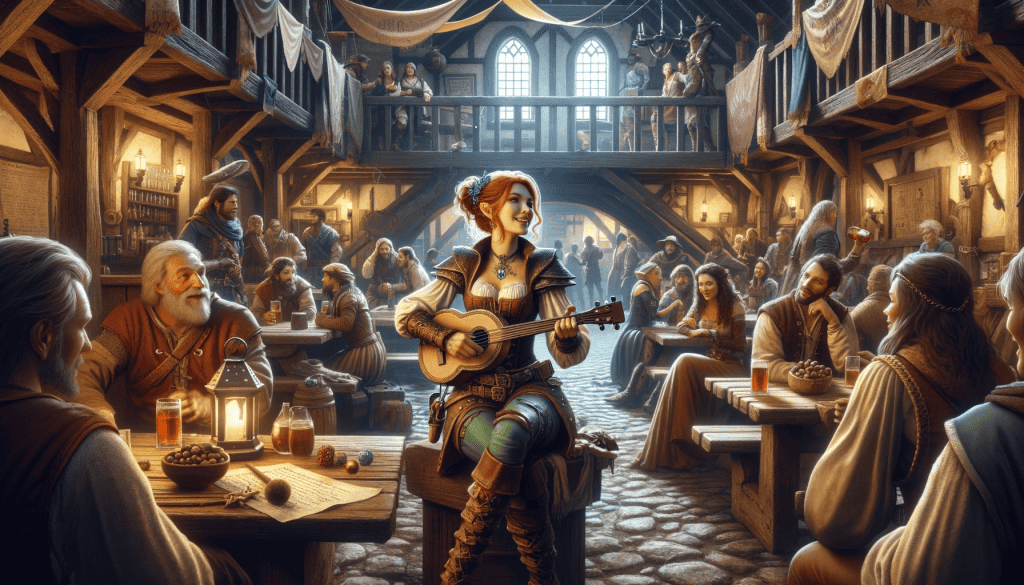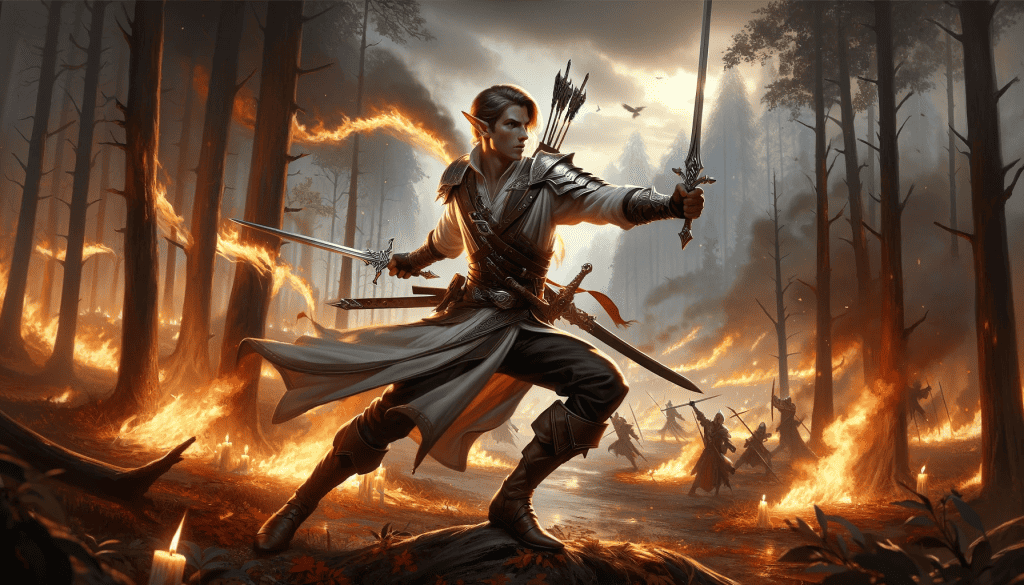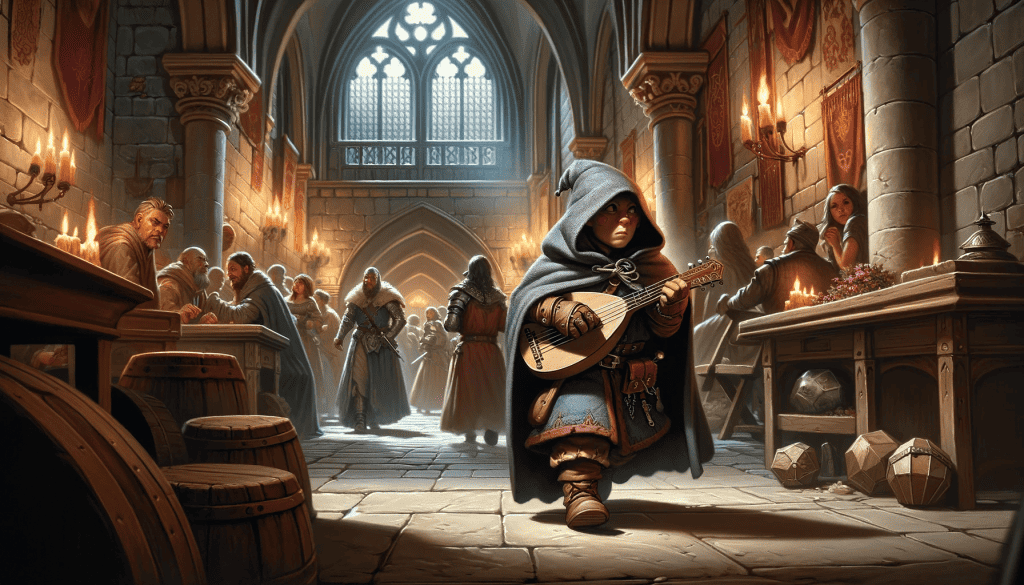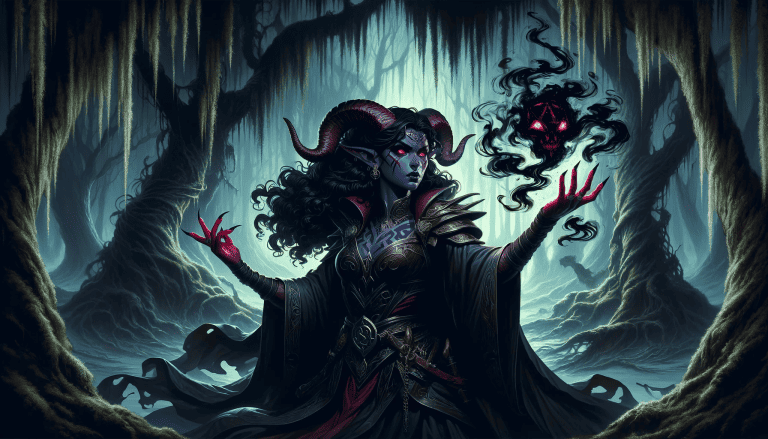A Beginner’s Guide to Bard Subclasses in 5th Edition D&D
You might have built your Bard, given them a name, and planned an elaborate backstory for them, but the hard part is yet to come. You now have to choose your subclass, the path you plan to follow, and the role you want to take in the group. Bard archetypes 5e are exciting and versatile, giving you plenty of options to choose from.
Do you want to be a warrior on the front lines dealing and taking melee damage? Would you rather be a spellcaster at the back? Maybe you want to take the role of the Rogue? Whatever you choose, there are Bard schools for exactly what you want. Do you want Bard’s subclasses explained so you can make the right choice? All you need to do is scroll down and begin your next big adventure.
How to Use This Guide
Throughout this guide, you will see a series of emojis—we use these to rank how useful a feature or ability is for your chosen class.
✅ — A critical feature you absolutely need to play Bard to the best of its ability. May also provide exclusive bonuses.
🆗 — A good feature that should definitely be considered.
⚠️ — A weaker feature that might only work with specific builds. Definitely largely circumstantial.
⛔ — A terrible feature that could be detrimental to your class that often weighs you down. Can also be a dump stat that is completely useless.
🆗College of Creation
This is the subclass for the creatives, the players who want to use their imaginations to the best of their ability and make the most of abstract situations. It’s intentionally vague with the purpose of solving problems in a manner that is effective yet unusual. It’s time to think outside of the box and really expand your imagination. There are no limits.
🆗Mote of Potential (3)
This ability grants you some fantastic alternative uses for your Inspiration die. It’s not perfect, but you’ll find plenty of uses for it.
- Ability Check: Advantage on your skill check’s Inspiration die, essentially giving you better odds.
- Attack Roll: Attack? No. Flashbang grenade? Yes.
- Saving Throw: Gain temporary Hit Points after a Save to soften the blow and save a life (it’s your life, but still).

🆗Performance of Creation (3)
As long as it’s within the size and cost constraints, you can make absolutely anything you can think of. You can get creative to save costs as well. Instead of a wooden boat, you will find a paper one that’s coated in wax will float just as well.
✅Animating Performance (6)
You will create an animated item with an excellent stat block. When you combine it with your Performance of Creation ability, you are basically creating a golem that is as real as you believe it to be.
🆗Creative Crescendo (14)
At this point, you can make many items with Performance of Creation, which means it’s time for you to open one of those mysterious magic shops that vanish as soon as you turn your back.
✅College of Eloquence
Command the crowd with your presence and your words. The eloquence of your tongue does the work for you, and as a master of storytelling, you have the ability to captivate an entire room with a single word. You are a diplomat, the persuader, and there are none who can resist your charm.
✅Silver Tongue (3)
A boost to your rolls means you will be able to talk your way out of almost any situation. If you stack your skills, you should have a base of 16 on a roll which means minor NPCs are effortless to get past (and that silver tongue can be put to good use in other places).
✅Unsettling Words (3)
Using your bonus action to activate this ability and your action right away to cast a debuff on your enemies gives you a strong chance to hit them with one of your many disruption or control spells. This is the combo dreams are made of.
✅Unfailing Inspiration (6)
Once you use Bardic Inspiration, they don’t lose it for the duration until they succeed on the affected roll. That means they have ten minutes of chances to succeed on an Attack, Save, or Check. Those tricky checks and attacks have never been easier, and you can even make those risk moves with the knowledge that you won’t lose the die if you fail.
⚠️Universal Speech (6)
Being able to cast Tongues is useful but also highly situational.
✅Infectious Inspiration (14)
In short, the number of Inspiration dice you have each day doubles.

⚠️College of Glamour
If support is your calling, this is the subclass for you. There are no combat proficiencies or any for weapons and armor, but you are sure to find your spellcasting augmented to impressive lengths. It might not be the best of the best, but there are features within this subclass that really stand out.
As a fun side note, it was also featured as an Unearthed Arcana Bard College DnD by Wizards of the Coast.
✅Mantle of Inspiration (3)
You can reposition your team, give them a little healing, and do it all as a Bonus Action. This alone makes the whole College worth it.
⚠️Enthralling Performance (3)
It is similar to Charm Person but provides you with a fun roleplay opportunity. It’s not a crucial ability, but if you are able to hold it then you have the chance to create some lasting (and hilarious) moments in the campaign.
🆗Mantle of Majesty (6)
If you cast Enthralling Performance successfully, you will then be able to cast Command without using a spell slot and succeed in doing so. This allows you to lock down a single target that you have under your spell, but there are no combat functionalities.
✅Unbreakable Majesty (14)
You gain a defensive buff once per short rest that can turn away your enemies. Even if a foe gets through, they have a huge disadvantage, and it’s the kind of ability that will save your skin again and again.
✅College of Lore
Every Bard who wants to be a caster ends up here, and it is the default Bard subclass for many who play this class. It gives you the most options in terms of spells and magical augmentation while also bundling on heaps of proficiencies for your Skills. All of this combined will transform you into the most useful version of a support or utility character.
✅Bonus Proficiencies (3)
You get three extra Skills, and it coincides with Expertise.
✅Cutting Words (3)
You can use a Reaction to manipulate rolls on the fly, an ability not to be underestimated. It doesn’t apply to enemy Saving Throws, but you can ruin their attacks.
✅Additional Magical Secrets (6)
This ability gives you spells from another class earlier than you would get them if you were part of another subclass.
✅Peerless Skill (14)
You can add Bardic Inspiration to Skill Checks. You just have to make sure you manage them carefully to avoid burning through them, which is very easily done.

⚠️College of Spirits
The inn will fall silent and gather to hear your chilling and unsettling tales. Stories from the dark and unnerving adventures are what make this subclass, and those campfire tales are the foundation of the subclass. Spirit Tales works as the driving force behind this College, granting you thrilling and unpredictable effects that will captivate your audience.
✅Guiding Whispers (3)
Guidance is one of the best Captrips in the game because you will make hundreds of Skills Checks in your time, and you’ll get a nice bonus to them. It’s a Concentration Cantrip, but one your entire party is able to benefit from.
🆗Spiritual Focus (3)
You use an occult object as your spellcasting focus, giving you a little boost to your damage and healing spells. It bridges the gap a little between you and the more specialized classes that might be in your party.
⚠️Tales from Beyond (3)
This is an awesome ability, and one that grows more powerful as the value of your Bardic Inspiration die grows. However, there is a major setback to this ability. The outcome is random, as dictated by the result of your inspiration die roll.
The effects become more powerful at higher numbers on the table, but the longer the list becomes, the lower the chance of rolling any one particular outcome. The lack of control and the fact you cannot reroll takes a lot away from this ability.
This ability uses a d12, and while we will go into detail about what each of the options is able to do in our dedicated guide to this subclass, here is a brief peek:
- Clever Animal: It’s very situational but works wonders in social situations.
- Renowned Duelist: Decent damage for a single target, but nothing exciting.
- Beloved Friends: Temporary Hit Points and pretty much always useful.
- Runaway: Reposition your entire party. Escape a whole host of situations.
- Avenger: Only works for melee attacks but the damage adds up FAST.
- Traveler: +1 AC bonus and some added speed for flavor.
- Beguiler: Take a turn away from a single target.
- Phantom: Invisibility for an Advantage on attack. Best placed on a Rogue.
- Brute: Big AOE, big damage, and can knock enemies Prone.
- Dragon: Decent damage and AOE, but not the best.
- Angel: Nice for healing.
- Mind-Bender: Works like the Beguiler, but better.
⚠️Spirit Session (6)
It starts off sounding incredible, but there are so many restrictions added to it that it ends up feeling pointless.
🆗Mystical Connection (14)
This ability grants the reroll that Tales from Beyond needs, but it comes so late in the game that it is practically useless.
⚠️College of Swords
This subclass is similar to the College of Valor, but it is less powerful and doesn’t mesh with other subclasses as easily as the other subclasses. It has some nice combat features and takes a few leaves from the Fighter book, but there are several aspects that can make this College feel like more of a weakness than a strength.
🆗Bonus Proficiencies (3)
You get proficiency with medium armour, which is fantastic. However, you can’t use shields and so getting your Dex to 18 can achieve the same result but with added sneakiness.
✅Fighting Style (3)
Being able to gain a Fighting Style is a massive boost to your capabilities with weapons. You get two options, and while both are good Dueling is the clear winner. It leaves you a free hand for everything that makes a Bard, well, a Bard (spellcasting, instruments, etc.).
⚠️Blade Flourish (3)
You get several options, but each one will consume a Bardic Inspiration die. This limits the effectiveness of the options, and you always run the risk of rolling a one and wasting it completely.
✅Extra Attack (6)
More attacks. More damage. It really is that simple.
✅Master’s Flourish (14)
Not wasting your bardic inspiration on Blade Flourishes, and being able to use these abilities every round makes a big difference to your damage output. The only downside is that you have to wait a while to get to this point. It’s this ability that makes this particular College viable.

✅College of Valor
This is the subclass for the Bard who wants to become a weapons master, the one who wants to rush to the front lines and become a useful melee support character. You will gain proficiency with defensive options when you pick this subclass as well as better use of your Inspiration when you are in combat. It’s certainly one of the best subclasses this class has to offer.
✅Bonus Proficiencies (3)
You get medium armor and shield proficiency at lower levels, which definitely helps you to become less squishy.
🆗Combat Inspiration (3)
This will help you to hack through low AC and HP enemies quickly, but it should be noted that this ability is less useful than using Inspiration to help you and your allies actually land attacks.
✅Extra Attack (6)
An additional attack means you throw out double the damage with your weapons.
✅Battle Magic (14)
Hit the enemy with a spell and then stab them. What more could you want?
⚠️College of Whispers
Secretive. Sly. The spiders who weave their webs and collect snippets of information without ever being noticed. This subclass is for the Bard, who wants to be more like a spy, presenting themselves as a jolly entertainer when really they are the keeper of dark secrets and hidden agendas. It’s a subclass that leaves you watching your back.
🆗Psychic Blades (3)
This is a very flashy use of Baric Inspiration, and while the additional damage is very nice, it is also a lot less useful than the original purpose of Bardic Inspiration.
⛔Words of Terror (3)
It’s a fear effect that is used outside of combat and is basically useless.
🆗Mantle of Whispers (6)
There is so much flavor here, and it really lends itself to the role of the infiltrator and information gatherer. If you want to lean more towards the Rogue side of things, this is exactly what you want to be using.
✅Shadow Lore (14)
You get a Dominate Monster effect that can be used once per day and leaves no trace that it was ever cast. You do need to be able to communicate with the target, so make sure you have Tongues prepared and ready to use.

FAQs
How Do Bard Subclasses Work in DnD?
Bard subclasses work to preserve tradition and pass down teachings from one generation to the next. College associations are loose, but the knowledge gained from them is valuable and help Bards decide which role they will take on the battlefield. Truthfully, subclasses define the kind of Bard you will be.
Which Subclass Is Best for a Bard?
The College of Lore is generally classed as the best subclass for a Bard. It is the pinnacle of spellcasting, and many Bards choose this College because of this. It’s a powerful and versatile subclass, one that allows you to hone your magical abilities. It is followed closely by the College of Valor as a top choice for Bards.
Until Next Time
We hope that you found our guide to the Bard subclasses helpful and that it’s aided you in making a decision on the path you’re going to take. There are so many types of Bard that it can be difficult to choose, but the good news is you remain one of the most versatile classes in the game regardless. Let us know how your build went and which subclass you decided to go with.







